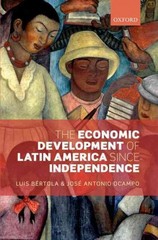Question
Part 1: The United States and Canada are trade partners. Each country has a zero current account balance and is operating in long-run equilibrium. Assume
Part 1: The United States and Canada are trade partners. Each country has a zero current account balance and is operating in long-run equilibrium. Assume that inflationary pressure causes the price level in the United States to rise relative to Canada.
(a) How will the change in the price level in the United States affect:
- U.S. demand for Canadian goods and services?
- net exports of the United States? Explain.
(b) Illustrate the impact of the change you identified in part (a) on a fully labeled AD-AS model for the U.S. economy. Use arrows to indicate any changes in AD, real GDP, and price level.
(c) Ceteris paribus, will Canada's national income increase, decrease, or remain the same?
(d) On side-by-side and fully labeled foreign exchange market graphs, illustrate the impact of the change in relative inflation on supply of the U.S. dollar (USD) and on demand for the Canadian dollar (CAD). Use arrows to indicate the change in the equilibrium exchange rate for each currency.
Part 2: Japan and China are trade partners, each with a current account balance of zero. The government of Japan increases taxes for all businesses in Japan. As a result, Japan's real income falls.
(e) On a fully labeled foreign exchange market graph, illustrate the impact of Japan's decrease in real income on the Japanese yen (JPY) with the price in terms of the Chinese renminbi (RMB).
(f) Based on your response to part (e), has the Chinese renminbi appreciated or depreciated?
(g) Assume the new exchange rate is 20 yen per 1 renminbi. Calculate the price of yen in terms of renminbi.
Part 3: Respond succinctly and precisely to each of the following scenarios. Hint: these are beginning with a currency value change; start from there, and do not consider what caused the change.
(h) The European Union and Brazil are trade partners. Brazil's currency, the real, appreciates relative to the European Union's euro. Ceteris paribus, how will this change affect:
- Brazil's net exports? Explain.
- the capital and financial account of Brazil?
Step by Step Solution
There are 3 Steps involved in it
Step: 1

Get Instant Access to Expert-Tailored Solutions
See step-by-step solutions with expert insights and AI powered tools for academic success
Step: 2

Step: 3

Ace Your Homework with AI
Get the answers you need in no time with our AI-driven, step-by-step assistance
Get Started


